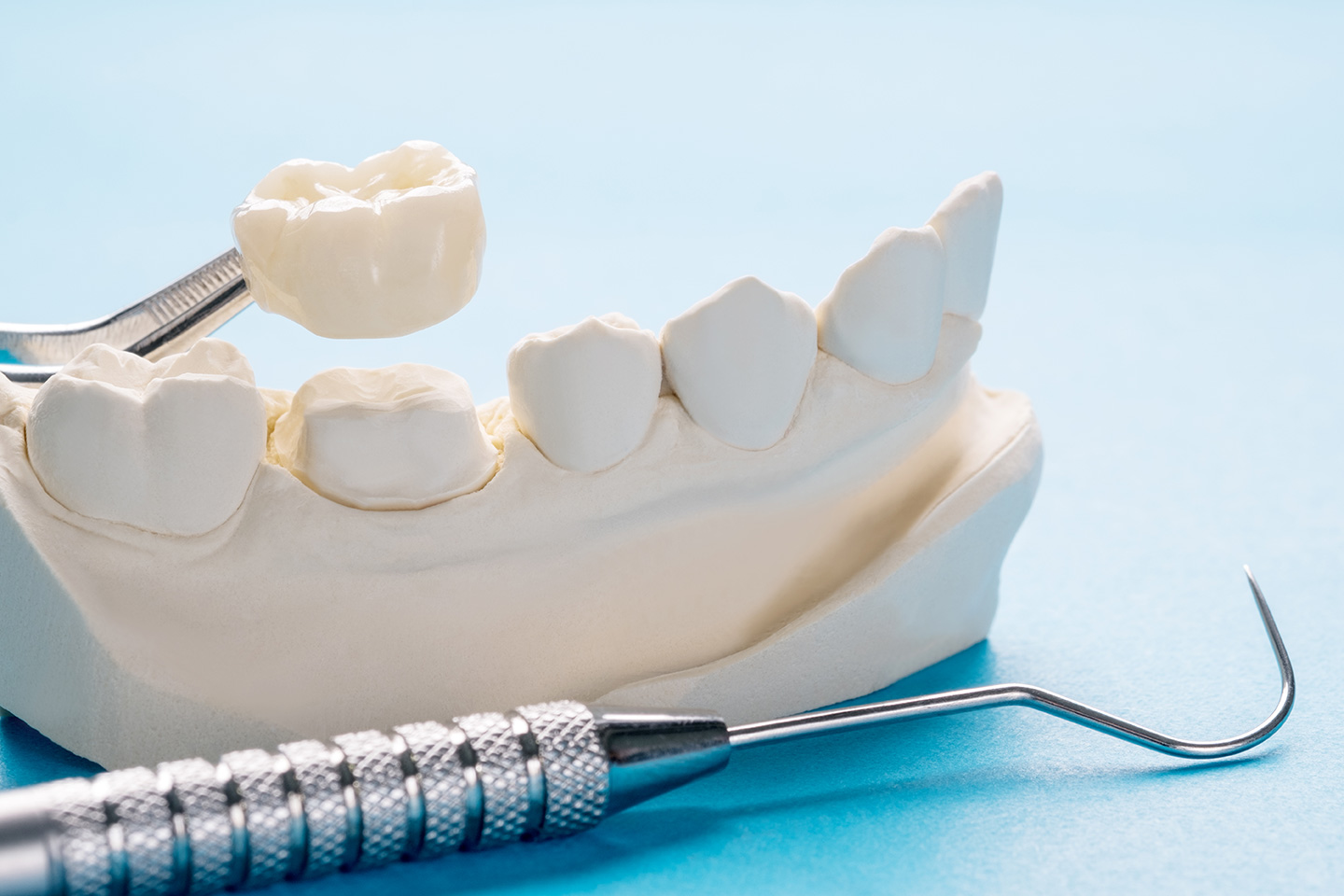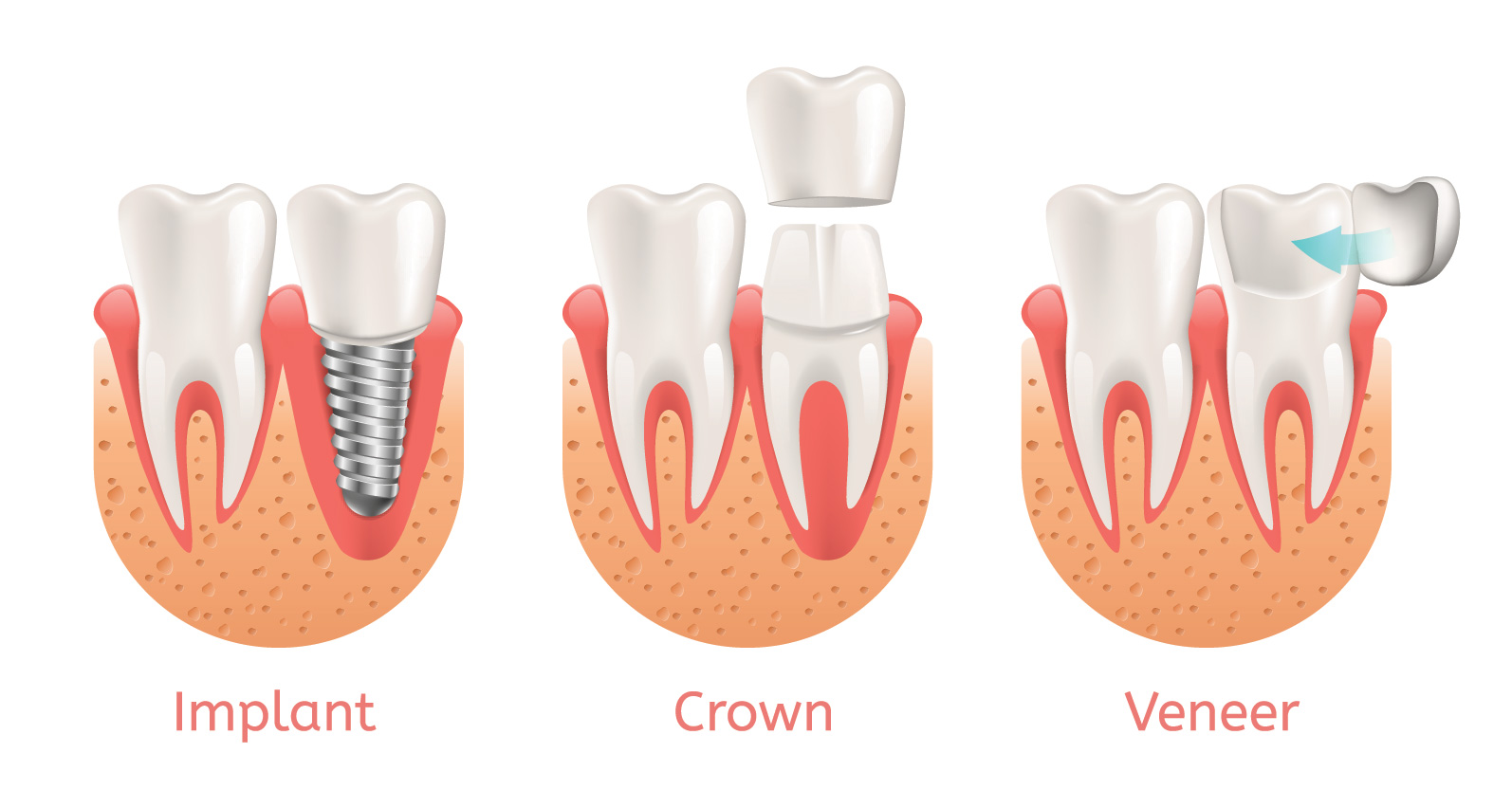What are Dental Crowns?
Over time, your teeth can get damaged. This can happen for a variety of reasons, like tooth decay, injuries or just use over time. Your teeth can lose their shape or size. Dental crowns are tooth-shaped “caps” that can be placed over your tooth. Think of it like a snug helmet for your tooth. The crown restores the tooth’s shape, size, strength and appearance.
The dental crown is cemented into place on your tooth and it covers the visible portion of the tooth.


Why would I need a dental crown?
You may need a dental crown for several reasons, including:
What are onlays and 3/4 crowns?
There are many types of crowns that can be used on your teeth. Onlays and 3/4 crowns are types of dental crowns that don’t cover as much of your underlying tooth as traditional dental crowns.
A traditional crown will cover your entire tooth. Onlays and 3/4 crowns may be appropriate when you still have a solid tooth structure. It’s considered a more conservative approach compared to full coverage of your crown. In this procedure, your dentist removes the affected area and performs a reshaping of the tooth to receive the crown.
What are dental crowns made of?
Permanent crowns can be made out of many different materials.
These materials can include:
The first visit
The tooth that’s receiving the crown will be filed down across the top and sides. This will make space for the crown itself. The amount of tooth that gets filed away depends on the type of crown you have.
All-metal dental crowns are thinner and don’t need as much of the tooth removed as all-porcelain or porcelain-fused-to-metal crowns.
If too much of your tooth is missing — due to damage or decay — a filling material can be used to “build up” enough tooth structure for the crown to cover.
After reshaping the tooth, a paste or putty is used to make a copy (also called a impression) of the tooth that’s going to receive the crown. Impressions of the teeth above and below the tooth that’s getting the dental crown will also be made. This is done to make sure that the crown will not affect your bite.
The impressions are sent to a dental laboratory. The laboratory makes the crowns and usually returns them to the dentist’s office in two to three weeks. During this first office visit, your dentist will make a temporary crown to cover and protect the prepared tooth while you’re waiting on the permanent crown.
The second visit
At the second visit, the permanent crown is placed on your tooth. First, the temporary crown is removed and the fit and color of the permanent crown is checked.
If everything is okay, a local anesthetic (“numbing” drug) is sometimes used to numb the tooth and the new crown is permanently cemented in place.
How long do dental crowns last?
On average, dental crowns last between five and 15 years. The life space of a crown can depend on the amount of “wear and tear” the crown is exposed to, how well you follow oral hygiene practices and personal mouth-related habits.
These mouth-related habits can include things like:
How much do dental crowns cost?
The costs of dental crowns can vary depending on where you live and the type of crown you pick. Porcelain crowns, for example, are typically more expensive than gold crowns, which are typically more expensive than porcelain-fused-to-metal crowns.
In general, dental crowns start at $1600 and up. This depends on the tooth to be crowned.
